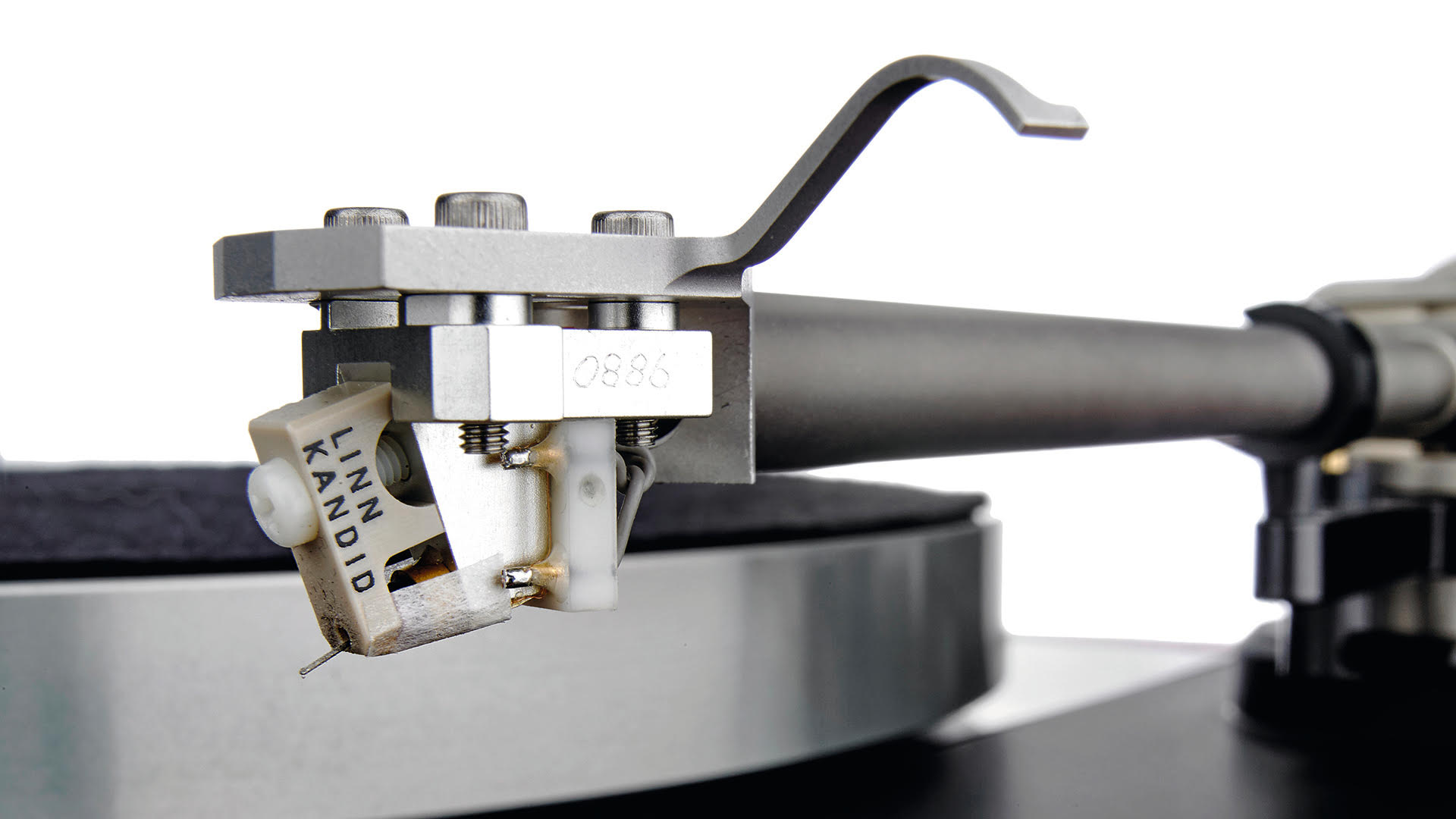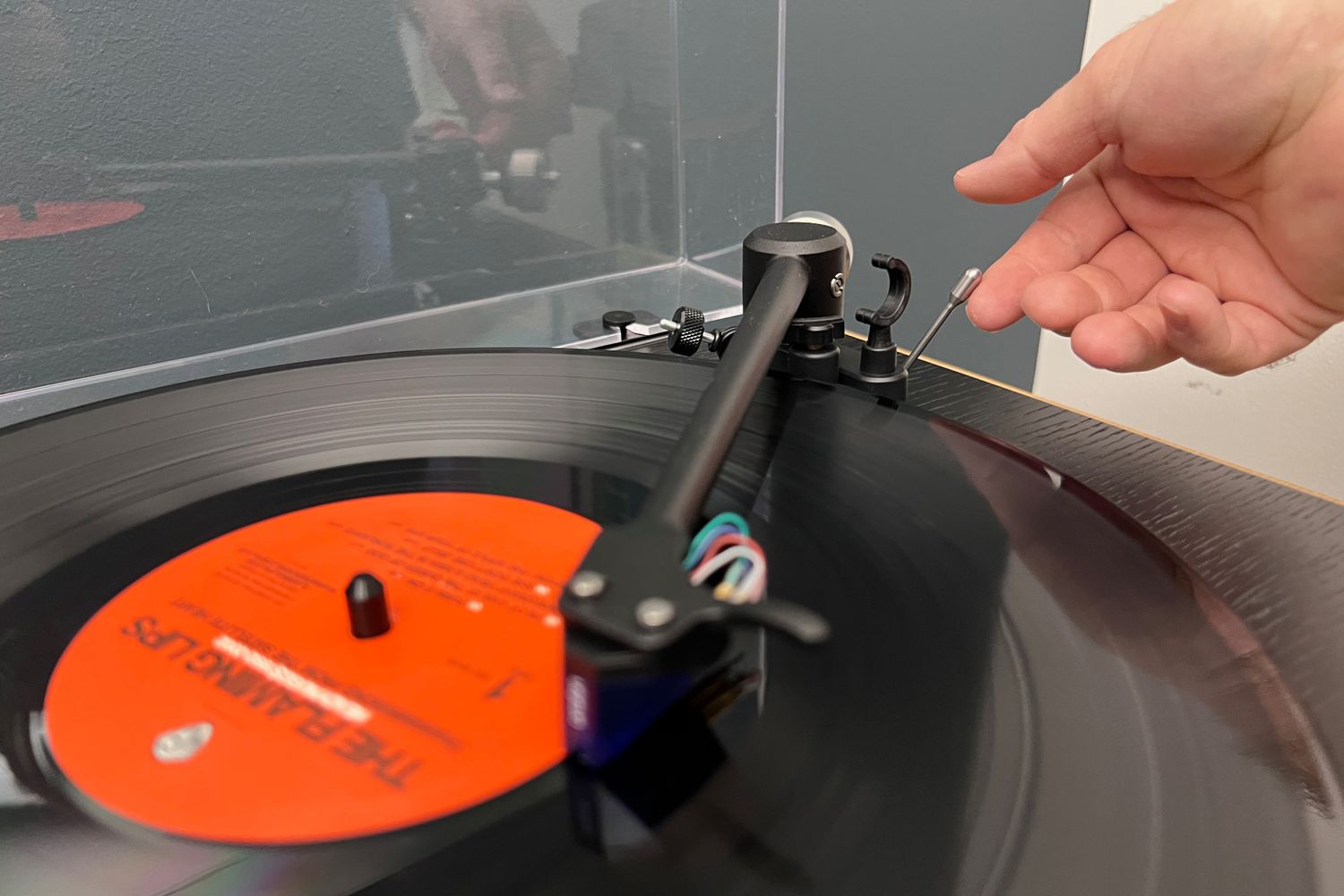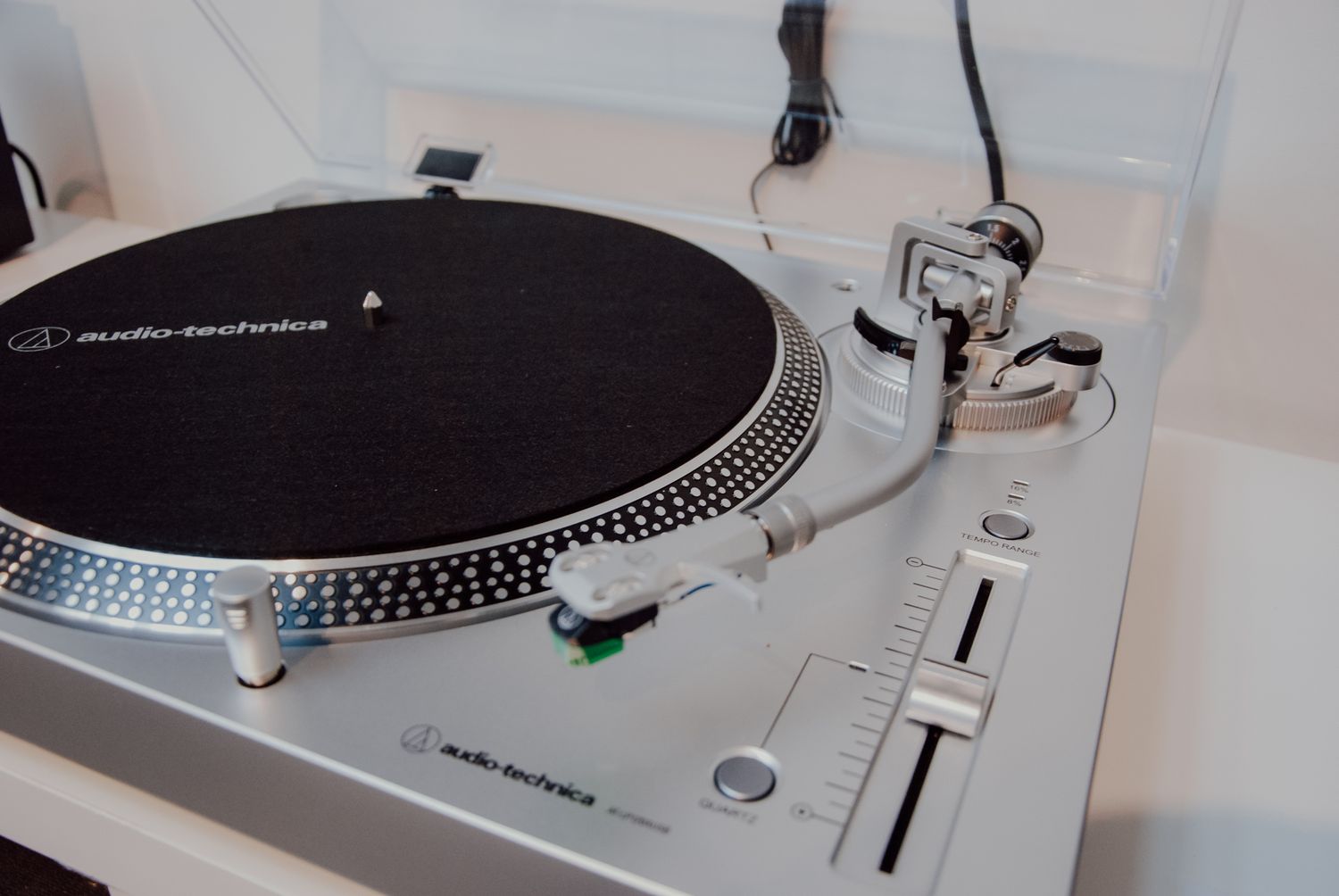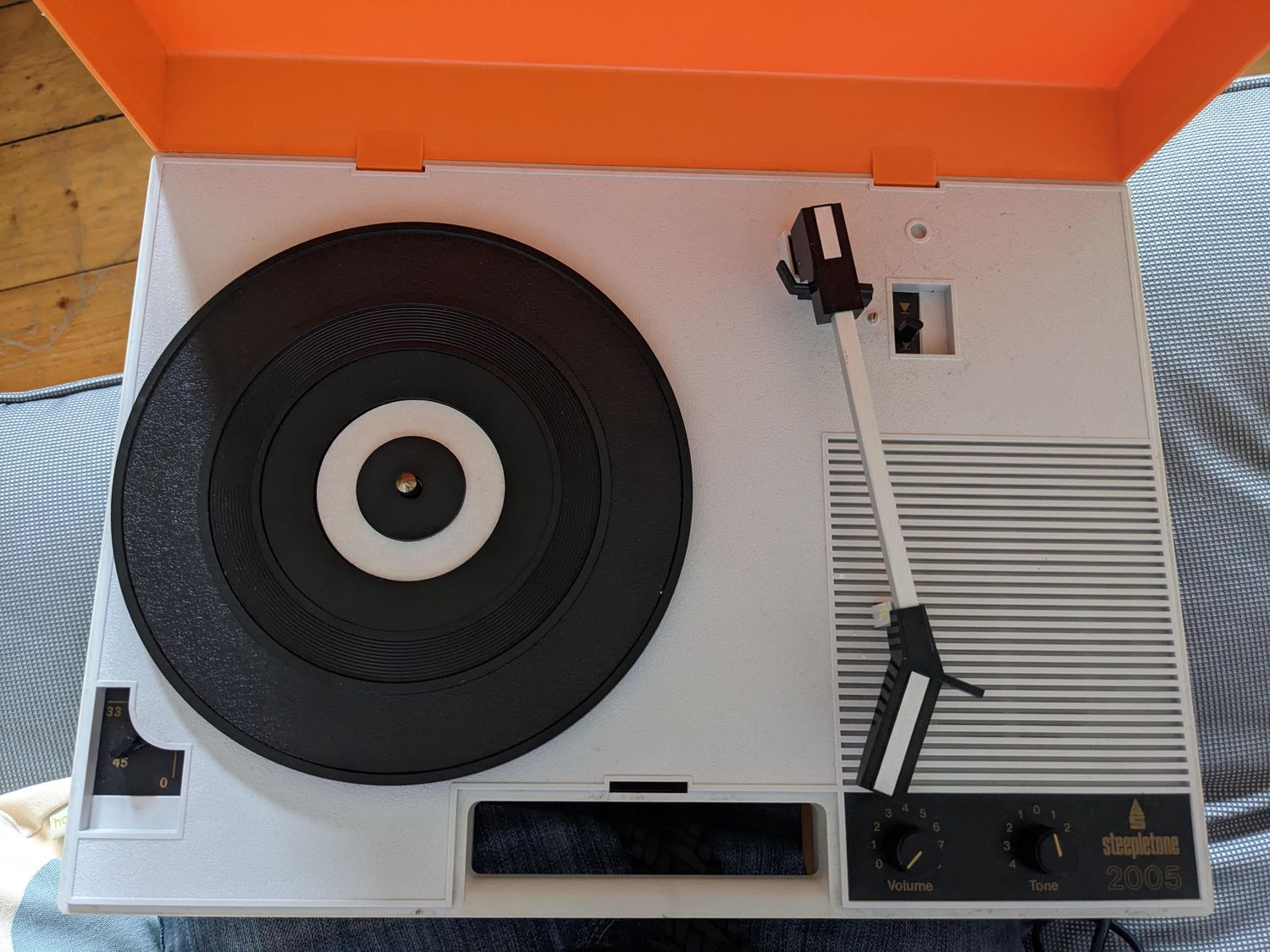Home>Devices & Equipment>Turntable>What Is An Mm Turntable
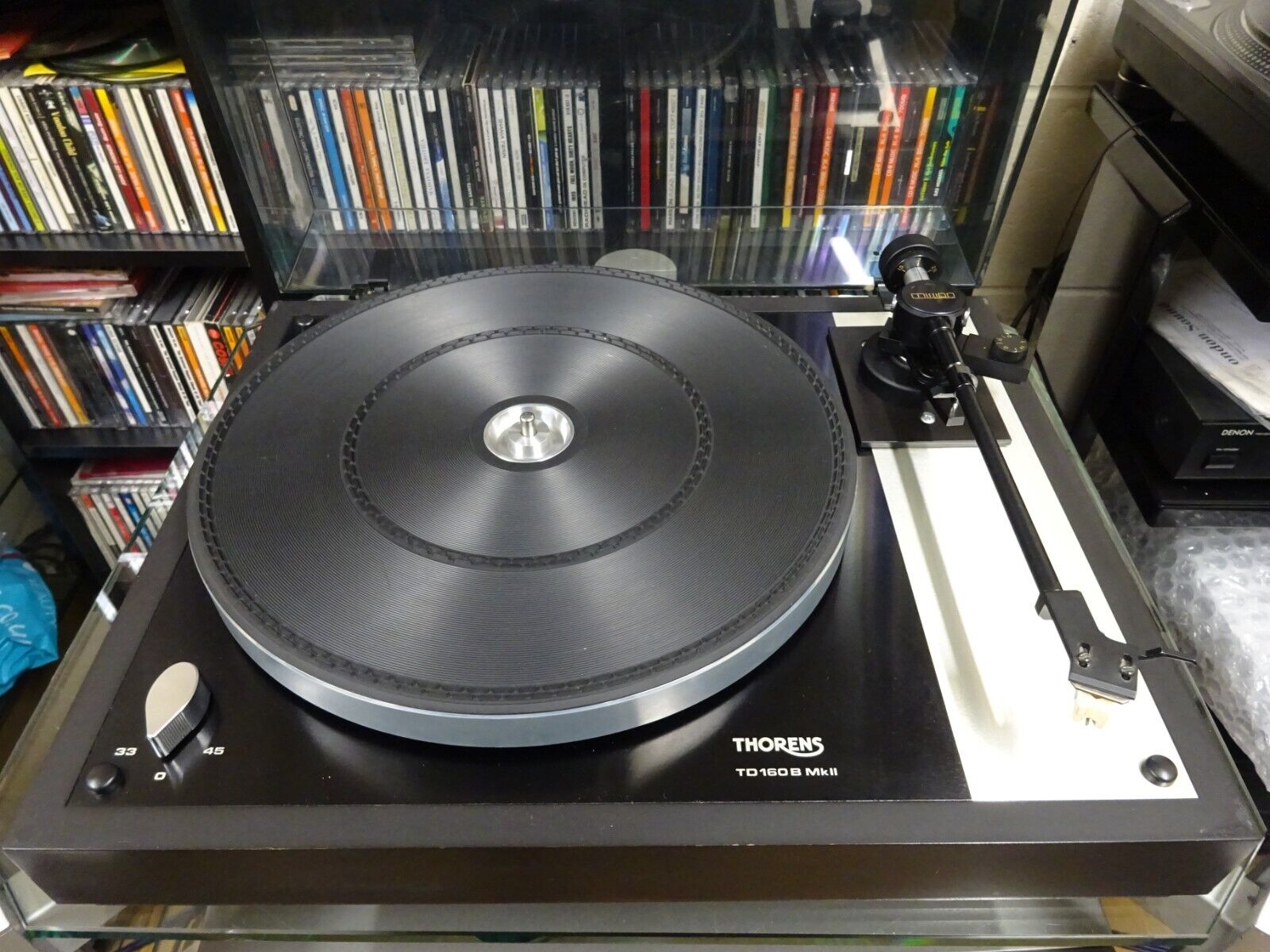

Turntable
What Is An Mm Turntable
Modified: January 22, 2024
Discover the world of turntables with our comprehensive guide. Learn what an MM turntable is, how it works, and why it's a must-have for any vinyl enthusiast.
(Many of the links in this article redirect to a specific reviewed product. Your purchase of these products through affiliate links helps to generate commission for AudioLover.com, at no extra cost. Learn more)
Table of Contents
- Introduction
- Definition of an MM Turntable
- Components of an MM Turntable
- How an MM Turntable Works
- Benefits of Using an MM Turntable
- Differences Between MM and MC Turntables
- Factors to Consider When Choosing an MM Turntable
- Maintenance and Care for an MM Turntable
- Popular Brands and Models of MM Turntables
- Conclusion
Introduction
Welcome to the world of turntables, where music comes alive in its purest form. Turntables have been a staple in the audio industry for decades, providing a warm and rich sound that is unmatched by modern digital formats. And among the various types of turntables available, the MM turntable is a popular choice for both audiophiles and casual music enthusiasts alike.
In this article, we will explore the world of MM turntables – what they are, how they work, their benefits, and factors to consider when choosing one. Whether you’re a vinyl enthusiast or just starting your journey into the analog world, this guide will provide you with a comprehensive understanding of MM turntables.
MM stands for “Moving Magnet,” which refers to the type of cartridge used in these turntables. The cartridge is responsible for converting the vibrations of the stylus on the record into an electrical signal that can be amplified and played through speakers. The MM cartridge design has been widely adopted due to its excellent performance, ease of use, and affordability.
While digital music has become the norm in today’s world, there has been a resurgence of interest in vinyl records. The unique sound and nostalgic experience of playing records have attracted a new generation of music lovers. And an MM turntable is the perfect device to enjoy the magic of vinyl records.
But what sets an MM turntable apart from other types? To answer that question, let’s delve into the components and inner workings of an MM turntable.
Definition of an MM Turntable
At its core, an MM turntable is a device used to play vinyl records. It consists of various components that work together to produce high-quality sound. The distinguishing feature of an MM turntable is the type of cartridge it uses – the Moving Magnet cartridge.
The Moving Magnet cartridge is an integral part of an MM turntable. It is responsible for translating the physical grooves on a vinyl record into an electrical signal that can be amplified and heard through speakers. This cartridge is called a “Moving Magnet” because it has a magnet attached to the cantilever or stylus, which moves with the vibrations of the record. The movement of the magnet generates a small electrical current, which is then amplified to reproduce the sound recorded on the vinyl.
An MM turntable typically has a tonearm that holds the cartridge and stylus in place. The tonearm is carefully calibrated to ensure precise tracking and minimize any distortion or skipping. It also features a counterweight and anti-skate mechanism to maintain the correct tracking force and reduce wear on the record.
In addition to the tonearm and cartridge, an MM turntable includes a platter, which spins the vinyl record at a constant speed. The platter is usually made of aluminum or acrylic and is designed to provide stable rotation for accurate playback. Some high-end MM turntables may also feature a belt drive system, where the platter is driven by a belt connected to a motor, resulting in reduced vibrations and better sound quality.
To control the speed of the platter, an MM turntable typically has a motor and a speed control mechanism. This allows you to switch between different playback speeds, such as 33 1/3, 45, and sometimes 78 revolutions per minute (RPM), depending on the record being played.
To connect the turntable to an audio system or speakers, most MM turntables have a set of RCA output jacks. These jacks allow you to send the amplified signal to a receiver, preamp, or powered speakers for playback.
Now that we have a clear understanding of what an MM turntable is and its basic components, let’s dive deeper into how it works and explore the benefits of using one.
Components of an MM Turntable
An MM turntable consists of several key components that work in harmony to deliver high-quality sound reproduction. Understanding these components can help you appreciate the intricate design and engineering behind a well-crafted MM turntable. Let’s take a closer look at each of these components:
- Tonearm: The tonearm is responsible for holding the cartridge and stylus. It is a crucial component that ensures the proper tracking and smooth movement of the stylus across the grooves of the record. The tonearm’s design and construction play a significant role in minimizing vibrations and maintaining accurate tracking force.
- Cartridge: The cartridge is arguably the most vital component of an MM turntable. It houses the stylus, cantilever, and magnets. The stylus, often diamond-tipped, tracks the record grooves and translates the physical movements into electrical signals. The cantilever transfers these movements to the magnets, generating electrical currents that are then sent to the phono stage for amplification.
- Platter: The platter is the circular platform on which the vinyl record sits. It spins at a constant speed, allowing the stylus to track the record grooves accurately. The platter’s material and weight distribution impact the turntable’s overall stability, vibration control, and rotational accuracy. High-end MM turntables often feature heavy platters made of materials like aluminum, acrylic, or glass to enhance performance.
- Motor: The motor is the driving force behind the platter’s rotation. It maintains a consistent speed so that the stylus can accurately read the record’s grooves. MM turntables typically adopt either a belt-drive or direct-drive system. In a belt-drive system, the motor spins a belt that, in turn, rotates the platter, resulting in lower motor noise and vibrations. Direct-drive systems, on the other hand, have the motor directly attached to the platter for better speed stability and quick start/stop functionality.
- Speed Control: MM turntables offer different playback speeds, commonly 33 1/3, 45, and sometimes 78 RPM. The speed control mechanism allows you to switch between these speeds, ensuring optimal playback for the specific record you are listening to. Some turntables offer manual speed adjustment, while others have electronic controls for convenient switching.
- Isolation Feet: Isolation feet are used to reduce vibrations and isolate the turntable from external disturbances. They provide stability and minimize the transmission of vibrations from the surface it rests on, helping to maintain accurate tracking and sound quality.
- Phono Stage: The phono stage, also known as a phono preamp, is an essential component for MM turntables. It amplifies the small electrical signals produced by the cartridge and prepares them for output to an audio system or speakers. Some turntables have a built-in phono stage, while others require an external phono preamp for proper signal amplification.
By understanding the various components of an MM turntable, you can make informed decisions when choosing the right turntable for your needs. Each component plays a crucial role in delivering accurate tracking, low distortion, and exceptional sound quality.
How an MM Turntable Works
An MM turntable works by converting the physical grooves on a vinyl record into an electrical signal that can be amplified and played through speakers. The process involves the precise movement of components and the meticulous tracking of the stylus along the record’s grooves. Let’s explore the step-by-step process of how an MM turntable works:
- Placing the vinyl record: Start by placing the vinyl record onto the turntable’s platter. Ensure that the record is centered and sits flat on the platter, ensuring optimal tracking and minimizing unwanted vibrations.
- Lowering the tonearm: Gently lower the tonearm, allowing the stylus to make contact with the record’s surface. The tonearm’s mechanism should provide a smooth and controlled descent to avoid damaging the stylus or the record.
- Stylus tracking the grooves: As the record begins to rotate, the stylus tracks along the record’s grooves. The diamond-tipped stylus precisely follows the contours of the grooves, picking up the vibrations encoded in the record’s surface.
- Generating electrical signal: The stylus’s movements cause the cantilever to flex, which in turn moves the magnets attached to it. This movement generates a small electrical current in the coil surrounding the magnets.
- Amplification: The small electrical signal produced by the cartridge needs to be amplified before it can be heard through the speakers. The MM turntable’s phono stage or preamp boosts the signal to line level, making it compatible with other audio equipment.
- Connectivity: The amplified signal is then sent to an audio system or speakers via the MM turntable’s output jacks. These output jacks are usually RCA connectors that allow for easy connection to a receiver, preamp, or powered speakers.
- Playback: With the amplified signal now connected to the audio system, the sound from the vinyl record is played back through the speakers, filling the room with the warm and distinct sound of analog music.
- Tracking force and anti-skate: Throughout the playback process, it’s important to maintain precise tracking force and anti-skate settings. This helps ensure that the stylus remains in contact with the record’s grooves without pressing too heavily or skipping, resulting in the best possible sound quality.
MM turntables rely on precision engineering and careful calibration to reproduce the best possible sound from vinyl records. The combination of the stylus, cartridge, tonearm, platter, and other components work together to deliver a truly immersive and enjoyable listening experience.
Benefits of Using an MM Turntable
Using an MM turntable offers a range of benefits that contribute to an exceptional audio experience. Whether you’re a vinyl enthusiast or new to the world of analog music, here are some advantages to consider:
- Superior audio quality: MM turntables deliver a warm, rich, and immersive sound that is distinct from digital formats. The intricate mechanics and precise tracking of the stylus result in accurate reproduction of the original recording, preserving the nuances and dynamics that can be lost in digital formats.
- Analog nostalgia: Vinyl records and MM turntables evoke a sense of nostalgia and authenticity. The process of handling physical records, carefully placing them on the turntable, and experiencing the crackling sound as they come to life creates a unique and engaging listening experience that is unmatched by digital music.
- Wide selection of records: Vinyl records offer a vast selection of music across various genres, including both new releases and classic albums. Collecting and exploring vinyl records opens up a world of musical discovery, where you can uncover hidden gems and enjoy the artwork and liner notes that accompany physical records.
- Longevity: Vinyl records are known for their durability and longevity when properly cared for. Unlike digital files that may become obsolete or subject to file corruption, vinyl records can be enjoyed for decades and passed down through generations, creating a lasting musical legacy.
- Customizability and upgradability: MM turntables offer a high degree of customizability and upgradability. You can personalize your setup by selecting different cartridges, stylus types, tonearms, and other components to tailor the sound to your preferences. This allows you to continuously refine and enhance your audio setup as your budget and preferences evolve.
- Aesthetics and craftsmanship: MM turntables are not just functional audio devices; they are also objects of beauty and craftsmanship. With their elegant designs, luxurious finishes, and attention to detail, MM turntables can become focal points in your home, reflecting your love for music and timeless design.
- Engagement and mindfulness: Playing vinyl records on an MM turntable requires a more involved and attentive listening experience. From carefully cleaning the record to delicately handling the stylus, vinyl playback encourages a sense of mindfulness and engagement with the music, allowing you to fully savor each note and lyric.
Whether you appreciate the sonic qualities of vinyl or seek a more immersive and intentional music-listening experience, using an MM turntable can elevate your audio enjoyment to new heights. Its distinctive sound, tactile engagement, and the vast world of vinyl records make it a worthwhile investment for any music lover.
Differences Between MM and MC Turntables
When exploring the world of turntables, you will often come across two popular types of cartridges: MM (Moving Magnet) and MC (Moving Coil). While both types serve the same purpose of translating vinyl grooves into electrical signals, there are some key differences between MM and MC turntables. Let’s delve into these differences:
- Cartridge Design: The most significant difference between MM and MC turntables lies in their cartridge designs. In an MM cartridge, a tiny magnet is attached to the cantilever, with the coils surrounding it. In contrast, an MC cartridge works on the principle of a small moving coil between magnets. This design distinction impacts various aspects of sound reproduction and performance.
- Output Level: MM cartridges generally have a higher output level compared to MC cartridges, making them more compatible with a wider range of receivers and amplifiers. MC cartridges, on the other hand, have a lower output level, requiring a phono stage or preamp with higher gain to amplify the signal to line level.
- Sound Characteristics: MM and MC cartridges have distinct sound characteristics. MM cartridges typically offer a warm and full-bodied sound with a smoother frequency response. MC cartridges, on the other hand, often produce more detailed and accurate sound reproduction, especially in the high-frequency range. The sound signature of an MM cartridge can be described as more forgiving and musical, while an MC cartridge tends to be more analytical and resolving.
- Tracking Ability: MC cartridges generally have superior tracking ability compared to MM cartridges, thanks to their lighter moving mass. This means that MC cartridges can more precisely navigate demanding passages and complex musical sections, resulting in lower distortion and improved tracking performance.
- Price Range: MC cartridges typically fall into a higher price range compared to MM cartridges. This is due to the more complex design and manufacturing processes involved in creating MC cartridges. MM cartridges, on the other hand, are generally more affordable and offer a wide range of options to suit various budgets.
- Individual Preference: The choice between MM and MC turntables ultimately comes down to personal preference. Some listeners prefer the warm and forgiving sound signature of MM cartridges and enjoy their compatibility and ease of use. Others prefer the detailed and accurate reproduction of MC cartridges, willing to invest in higher-end systems to fully appreciate their capabilities.
When considering MM and MC turntables, it’s important to remember that the choice of cartridge type is just one aspect of the overall turntable setup. Factors such as tonearm quality, build materials, and overall system synergy also have a significant impact on sound quality.
Whether you choose an MM or MC turntable, both options offer their own unique sonic characteristics and merit. Ultimately, it comes down to your personal taste, budget, and desired listening experience.
Factors to Consider When Choosing an MM Turntable
When selecting an MM turntable, there are several important factors to consider to ensure you choose a model that meets your specific needs and preferences. Taking these factors into account will help you find a turntable that delivers excellent sound quality and a seamless user experience. Here are some key factors to consider:
- Build Quality and Durability: Look for a turntable that is well-built and made from high-quality materials. A sturdy construction helps minimize vibrations and ensures long-term durability.
- Tonearm Design and Adjustability: Consider the tonearm design and its adjustability options. Look for features like anti-skate adjustment, tracking force adjustment, and tonearm height adjustment to fine-tune the tracking and optimize the playback of your vinyl records.
- Speed Stability: Check if the turntable offers accurate speed stability. This ensures that the platter spins consistently at the correct speed, maintaining optimal playback quality and preventing any pitch variations.
- Cartridge Compatibility: Ensure that the turntable you choose is compatible with MM cartridges. While most MM turntables are designed for MM cartridges, it is still important to double-check to ensure proper cartridge alignment and performance.
- Platter Material and Design: Consider the material and design of the turntable’s platter. Heavy platters made of materials like aluminum, acrylic, or glass provide better rotational stability and reduce vibrations, resulting in improved sound quality.
- Speed Options: Check if the turntable supports the playback speeds you require. Most MM turntables offer 33 1/3 and 45 RPM playback, but if you have a collection of 78 RPM records, make sure the turntable supports that speed as well.
- Phono Stage: Determine whether the turntable has a built-in phono stage or requires an external phono preamp. If it has a built-in phono stage, ensure that it offers good amplification quality to match the performance of the turntable and your audio system.
- Budget: Consider your budget and find a balance between features and price. Determine how much you are willing to invest in an MM turntable based on your audio needs and long-term goals.
- User Reviews and Reputation: Read user reviews and consider the reputation of the manufacturer. Research the experiences of others who have used the turntable model you are interested in to get insights into its performance and reliability.
By considering these factors, you can make an informed decision when choosing an MM turntable that best suits your needs, preferences, and budget. Remember, a good MM turntable will provide a foundation for a great analog listening experience and bring your vinyl records to life with exceptional sound quality.
Maintenance and Care for an MM Turntable
Maintaining and caring for your MM turntable is crucial to ensure optimal performance and longevity. By following some simple maintenance practices, you can keep your turntable in excellent condition and enjoy the best possible audio playback. Here are some essential maintenance tips to consider:
- Keep the turntable clean: Regularly clean your turntable to remove dust, dirt, and debris that can affect sound quality. Use a carbon fiber brush or a soft anti-static brush to gently sweep the surface of the record and remove any particles. Additionally, periodically clean the platter, tonearm, and stylus using appropriate cleaning products and techniques recommended by the manufacturer.
- Avoid excessive vibration: Place your turntable on a stable and level surface to prevent unnecessary vibrations that can interfere with playback. Keep it away from speakers or other sources of vibrations to maintain accurate tracking and sound quality.
- Protect the stylus: The stylus is a delicate and critical component of your MM turntable. Handle it with care, avoiding any unnecessary contact or rough handling that could damage or bend it. Additionally, regularly inspect the stylus for any signs of wear or damage. If you notice any issues, consider replacing it to maintain optimal sound reproduction.
- Properly store and handle vinyl records: Store your vinyl records in a cool and dry environment to protect them from warping or mold growth. Use proper record sleeves or jackets to prevent dust accumulation and ensure safe storage. When handling records, hold them by the edges to prevent fingerprints and avoid placing them on surfaces that may scratch the playing surface.
- Check and adjust the tracking force: Periodically check and adjust the tracking force of your tonearm to ensure that it is set according to the specifications of your cartridge. Incorrect tracking force can lead to poor sound quality and potential damage to your turntable or records. Refer to the manufacturer’s guidelines or consult an expert if you are unsure about the proper tracking force for your specific setup.
- Keep the belt (if applicable) in good condition: If your MM turntable uses a belt-drive system, regularly inspect the belt for any signs of wear or deterioration. Replace the belt if it becomes loose, cracked, or damaged to maintain proper rotation speed and minimize motor noise.
- Periodic maintenance of moving parts: Perform routine maintenance on moving parts such as the tonearm pivot or bearings. Lubricate these parts only as recommended by the manufacturer, using appropriate lubricants to ensure smooth and accurate movement.
- Professional servicing: If you encounter any mechanical issues or suspect a problem with your MM turntable, consider seeking professional servicing. Trained technicians can diagnose and address any underlying issues, ensuring proper functionality and performance.
By following these maintenance practices, your MM turntable will continue to provide you with exceptional sound quality and a pleasurable listening experience for years to come. Remember, proper care and maintenance are essential for preserving the longevity and value of your turntable and vinyl record collection.
Popular Brands and Models of MM Turntables
When it comes to MM turntables, there are several reputable brands known for producing high-quality models that cater to different budgets and preferences. Here are some popular brands and their standout models:
- Rega: Rega is renowned for its dedication to precision engineering and quality sound reproduction. The Rega Planar 1 and Rega Planar 3 are two popular MM turntable models that offer exceptional performance at accessible price points. These turntables combine simplicity, stylish design, and excellent sound quality, making them a preferred choice for many vinyl enthusiasts.
- Pro-Ject: Pro-Ject offers a wide range of turntables, including highly regarded MM models. The Pro-Ject Debut Carbon and Pro-Ject Essential III are standout options known for their exceptional build quality, reliable performance, and outstanding value for money. Pro-Ject turntables often incorporate meticulous attention to detail and use high-quality components, resulting in impressive sound reproduction.
- Audio-Technica: Audio-Technica has a strong presence in the turntable market and offers a variety of MM turntables to suit different needs. The Audio-Technica AT-LP120XUSB and Audio-Technica AT-LP3 are popular choices known for their solid construction, user-friendly features, and great sound quality. These turntables often come with built-in phono stages and USB connectivity options, providing flexibility and convenience.
- Technics: Technics, a venerable name in the audio industry, is known for its high-end turntable offerings. The Technics SL-1500C and Technics SL-1200GR are highly-regarded MM turntables that deliver exceptional sound quality and precision engineering. These models incorporate innovative features and robust construction, with attention to detail that satisfies even the most discerning audiophiles.
- Denon: Denon is a respected brand that offers a range of turntables, including reliable MM models. The Denon DP-300F and Denon DP-400 are popular choices known for their user-friendly operation and excellent sound quality. These turntables often feature automatic operation, built-in phono stages, and sleek designs that blend seamlessly with modern home audio setups.
- U-Turn Audio: U-Turn Audio is known for its commitment to simplicity and affordability without compromising on sound quality. The U-Turn Audio Orbit Basic and U-Turn Audio Orbit Plus are standout MM turntable options that offer excellent value for money. These turntables are handcrafted in the USA, offer customizable options, and provide a smooth and engaging audio experience.
These are just a few examples of popular brands and models of MM turntables available in the market. It’s always recommended to research and compare different options to find a turntable that suits your specific requirements and preferences. Consider factors such as build quality, sound performance, features, and price to make an informed decision and enjoy the best possible vinyl playback experience.
Conclusion
The world of MM turntables opens up a world of rich and vibrant sound, bringing the magic of vinyl records to life. With their unique charm and distinctive sound quality, MM turntables have gained popularity among music enthusiasts seeking an authentic and immersive listening experience. Whether you are a seasoned vinyl enthusiast or just embarking on your analog music journey, MM turntables offer a range of benefits that make them a worthy investment.
In this article, we have explored the definition of an MM turntable and its key components. We have learned about how an MM turntable works, converting physical grooves into electrical signals for amplified playback. Additionally, we have discussed the benefits of using an MM turntable, including superior audio quality, analog nostalgia, and the wide selection of records available in the vinyl format. Furthermore, we have highlighted the differences between MM and MC turntables, allowing you to make an informed choice based on your preferences.
When choosing an MM turntable, it is crucial to consider factors such as build quality, adjustability, speed stability, cartridge compatibility, platter design, and budget. Additionally, we discussed the importance of maintenance and care for your MM turntable, including regular cleaning, stylus protection, and proper handling of vinyl records.
Lastly, we provided an overview of popular MM turntable brands and models, such as Rega, Pro-Ject, Audio-Technica, Technics, Denon, and U-Turn Audio. These brands offer a range of options to suit various budgets, preferences, and performance requirements.
In conclusion, MM turntables provide a gateway to a truly captivating and immersive music experience. Whether you’re drawn to the warmth and richness of analog sound or simply enjoy the process of spinning vinyl records, an MM turntable will elevate your audio enjoyment and allow you to rediscover the timeless beauty of vinyl records.

